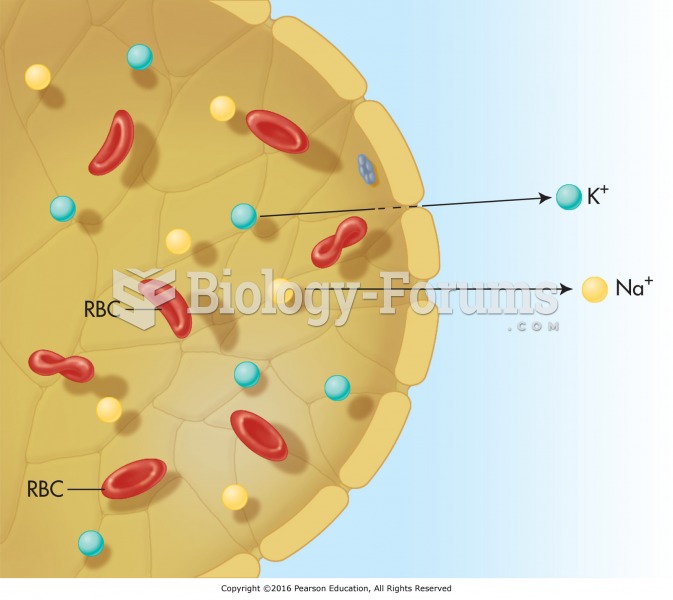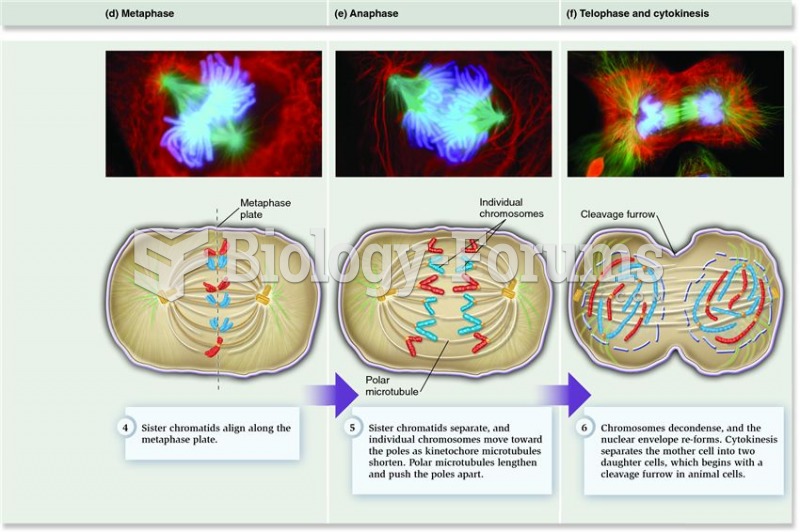|
|
|
On average, someone in the United States has a stroke about every 40 seconds. This is about 795,000 people per year.
When Gabriel Fahrenheit invented the first mercury thermometer, he called "zero degrees" the lowest temperature he was able to attain with a mixture of ice and salt. For the upper point of his scale, he used 96°, which he measured as normal human body temperature (we know it to be 98.6° today because of more accurate thermometers).
The top 10 most important tips that will help you grow old gracefully include (1) quit smoking, (2) keep your weight down, (3) take supplements, (4) skip a meal each day or fast 1 day per week, (5) get a pet, (6) get medical help for chronic pain, (7) walk regularly, (8) reduce arguments, (9) put live plants in your living space, and (10) do some weight training.
Cytomegalovirus affects nearly the same amount of newborns every year as Down syndrome.
Complications of influenza include: bacterial pneumonia, ear and sinus infections, dehydration, and worsening of chronic conditions such as asthma, congestive heart failure, or diabetes.
 Adults in the middle-aged group (37–42 years) score higher on measures of generativity than either ...
Adults in the middle-aged group (37–42 years) score higher on measures of generativity than either ...
 (a) In a healthy eye, aqueous humor is formed in the ciliary process and drains through the canal of ...
(a) In a healthy eye, aqueous humor is formed in the ciliary process and drains through the canal of ...
 The process of filtration in the kidneys, where smaller solutes, such as the electrolytes sodium and ...
The process of filtration in the kidneys, where smaller solutes, such as the electrolytes sodium and ...




